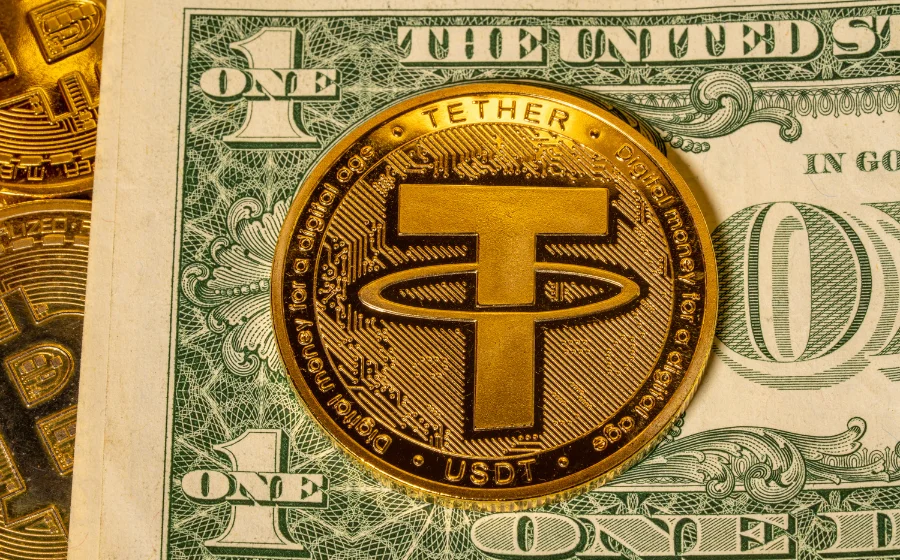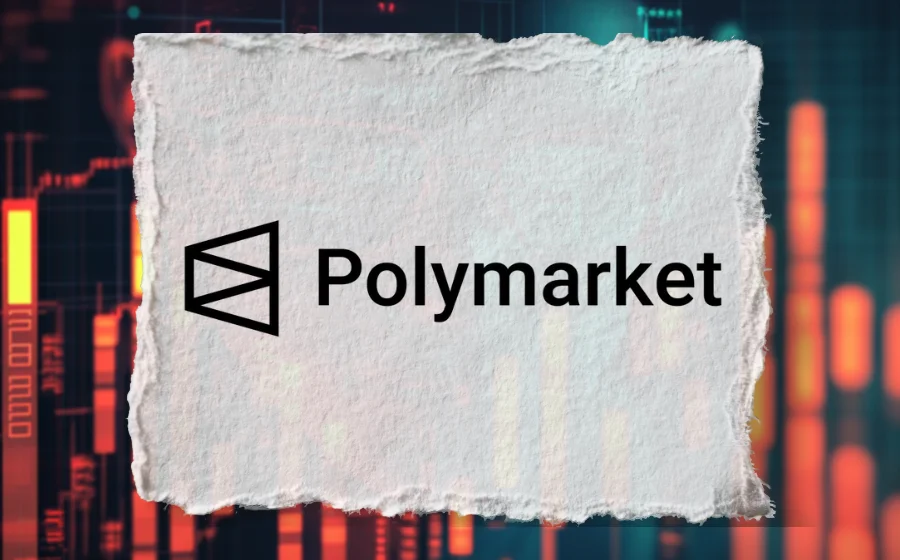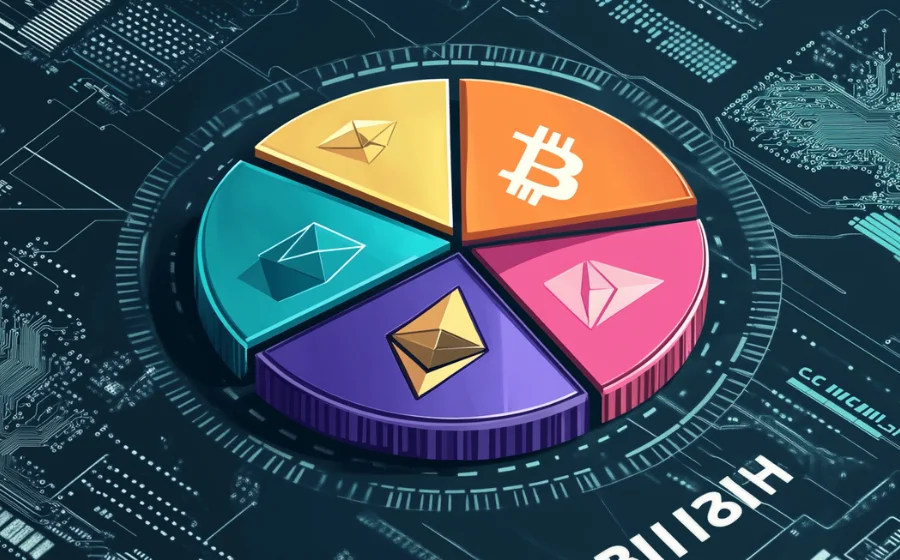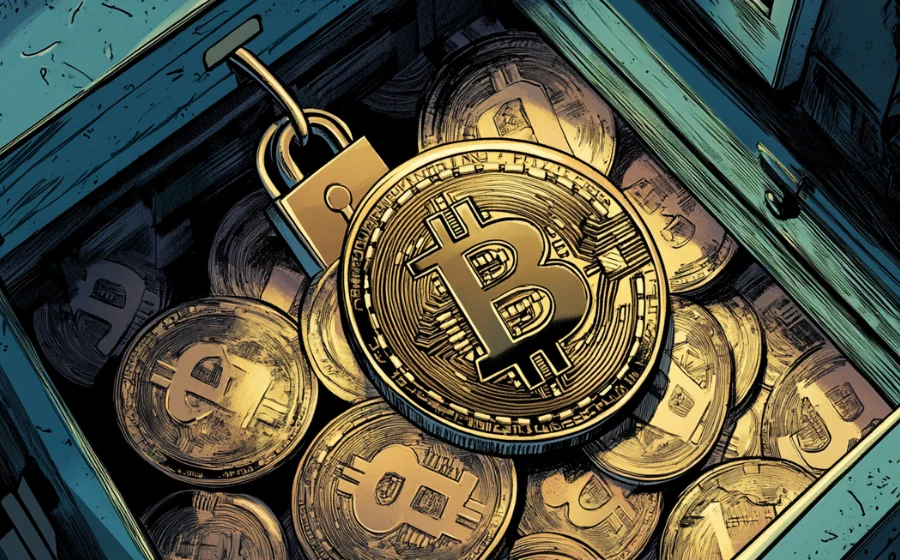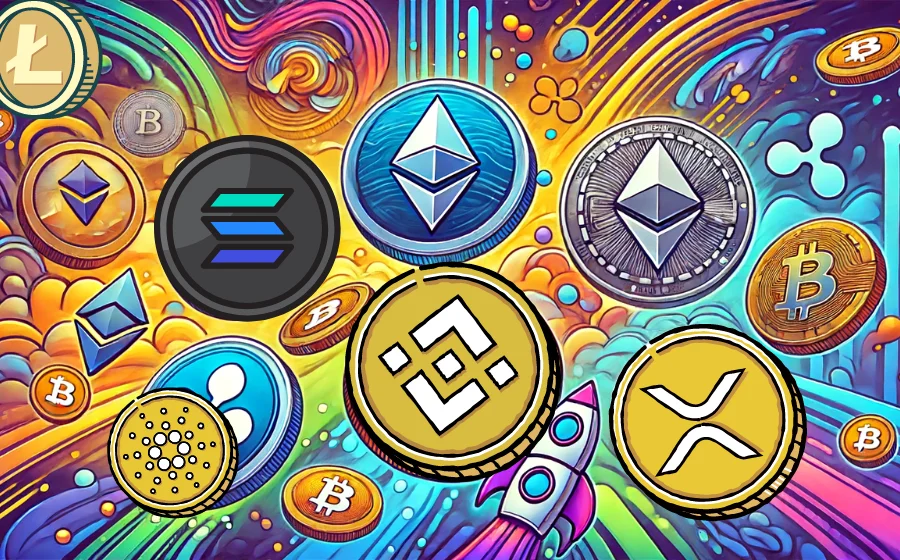
KEYTAKEAWAYS
- Altcoins, unlike Bitcoin, aim to improve transaction speed, mining mechanisms, or add new features, enhancing the cryptocurrency landscape.
- Altcoin season is marked by altcoins outperforming Bitcoin, driven by optimism and increased liquidity in the market.
- Key indicators for altcoin season include a decline in BTC's market cap dominance, rising altcoin trading volume, and an Altcoin Season Index above 75.

CONTENT
Altcoins are cryptocurrencies other than Bitcoin. Discover what altcoin season is, key indicators, and how to evaluate altcoin investments.
WHAT ARE ALTCOINS?
Altcoins are derived from “Alternative Coins.”
Altcoins refer to cryptocurrencies other than Bitcoin (BTC).
Since Bitcoin was the first and most widely known cryptocurrency, and its design is entirely open-source, anyone or any organization can easily modify one or several parameters and release a cryptocurrency very similar to it. In a narrow sense, all other cryptocurrencies besides Bitcoin are considered altcoins.
Initially, the term “Altcoin” was used for all non-Bitcoin cryptocurrencies, including stablecoins and meme coins. Some altcoins have indeed improved on Bitcoin’s shortcomings or added new features, but so far, no altcoin has surpassed BTC.
Examples of altcoins that have stood out from the crowd include Ethereum, Litecoin, Ripple, and Solana, showcasing the diversity and innovation in this field.
>>> More to read :
WHAT IS ALTCOIN SEASON?
Altcoin season occurs when the performance of altcoins surpasses that of Bitcoin, and their prices soar across the board. This period of rapid growth in the altcoin market is driven by optimistic sentiment, similar to the idea of “a rising tide lifts all boats.” Altcoin season fuels the development of nearly all cryptocurrency sectors, with a significant influx of liquidity driving this momentum.
During a bull market, although BTC has the highest market cap, the explosive potential of altcoins can sometimes exceed that of BTC. To measure the relative performance of BTC versus altcoins, we can use the Altcoin Season Index, which can be found on blockchaincenter.net. This index helps us determine whether we are entering an altcoin season.
The “Altcoin Season Index” aggregates the performance of the top 50 altcoins over the past 90 days and compares it to BTC’s performance.
When the majority of altcoins outperform BTC over a certain period, we can say the market has entered an altcoin season.
1. Altcoin Season: The Altcoin Season Index > 75, indicating that over the past three months, more than 75% of altcoins have outperformed BTC.
2. Bitcoin Season: The Altcoin Season Index < 25, indicating that over the past three months, fewer than 25% of altcoins have outperformed BTC.
- When Will Altcoin Season Arrive?
Cryptocurrency investments are more uncertain compared to traditional investments, making it challenging to predict when the next altcoin season will occur.
However, we can observe the following indicators to determine if we are entering an altcoin season:
1. A decline in BTC’s market cap dominance, indicating more funds are flowing into altcoins.
2. An increase in altcoin trading volume.
3. The Altcoin Season Index > 75.
Currently, with the approval of the BTC spot ETF in January 2024, traditional financial funds are primarily flowing into BTC. As a result, BTC’s market cap dominance continues to rise, and the Altcoin Season Index has been declining since January.
Furthermore, for an altcoin season to occur, the cryptocurrency market needs to return to a bull market. Similar to the stock market, cryptocurrency investors are also waiting for news of a Federal Reserve rate cut.
In the previous bull market, a significant amount of funds flowed into the cryptocurrency market. In a low-interest-rate environment, investors seeking higher returns turned their attention to altcoins with greater potential. However, as the Federal Reserve’s stance on rate cuts remains unclear, the likelihood of entering an altcoin season in the short term is relatively low.
>>> More to read : ALTCOIN SEASON! 3 Cryptos With More Than 50x Growth in June 2024
HOW TO INVEST IN ALTCOINS
Altcoins, compared to BTC or mainstream cryptocurrencies, come with higher risks. Investors may face extreme price volatility, project abandonment by developers, programming flaws in the tokens themselves, and loss of interest in the project, all of which can potentially cause the price of altcoins to plummet to zero overnight.
To determine if an altcoin is worth investing in, consider the following five points:
1. Market Cap Ranking: Choose altcoins that rank within the top 50 by market cap.
2. Listed on Mainstream Exchanges: Ensure the altcoin is listed on major exchanges and has good liquidity.
3. Project Team Background and Support: Investigate the background of the project team and check if it has endorsements or support from reputable institutions or venture capitalists.
4. Complete Whitepaper: Verify if the project has a comprehensive whitepaper.
5. Active Community Engagement: Look for continuous community engagement and the provision of timely, reliable information.
POPULAR ALTCOINS IN THE MARKET
1. Ethereum (ETH)
Ethereum is a decentralized platform that supports smart contracts and decentralized applications (DApps). As the leading altcoin in terms of market cap and trading volume, its main features are flexibility and scalability. A large developer community drives its continuous technological innovation. Recently, Ethereum has also passed an Ethereum ETF.
>>> More to read : What Is Ethereum & How Does It Work?
2. Solana (SOL)
Solana boasts excellent performance and is designed for large-scale decentralized applications (DApps). Its most notable features are its extremely fast transaction speeds and low fees. Solana can process thousands of transactions per second, making it ideal for high-frequency trading and real-time applications.
>>> More to read : What is Solana? The Ethereum killer
3. Ripple (XRP)
Ripple was developed by Ripple Labs for use in their digital payment protocol. It uses a unique federated consensus mechanism for transaction validation, achieving fast confirmations and low energy consumption. Ripple provides low-cost cross-border payment solutions.
>>> More to read : XRP: The Digital Asset for Global Payments
4. Toncoin (TON)
TON achieves high throughput and scalability through its multi-layer architecture and dynamic sharding technology. It also has a large community on Telegram.
>>> More to read : Toncoin: Telegram’s cryptocurrency
5. Dogecoin (DOGE)
Dogecoin can be considered the first memecoin. Its large investor base and low transaction fees have garnered significant attention. It is mainly used for online tipping, donations, and various small transactions.
>>> More to read : Dogecoin(DOGE) : King of Memecoins
6. Cardano (ADA)
Cardano uses a consensus mechanism called “Ouroboros,” which is a more energy-efficient algorithm. It allows ADA holders to help operate the network without relying on large amounts of electricity like Bitcoin mining. This makes ADA more environmentally friendly and operationally efficient.
>>> More to read : Cardano (ADA): Solving Blockchain Challenges
7. BNB
BNB is an altcoin issued by Binance, the world’s largest cryptocurrency exchange. It is used for paying transaction fees, participating in Binance’s Initial Exchange Offerings (IEO), and obtaining various discounts and benefits on the platform.
>>> More to read : BNB: The Cryptocurrency Powering Binance Ecosystem
FAQ
- What are Altcoins ?
Altcoins refer to cryptocurrencies other than Bitcoin (BTC).
- What is the Difference Between Altcoins and Bitcoin?
Altcoins typically attempt to improve upon certain aspects of Bitcoin, such as transaction speed, mining mechanisms, or functionalities.
▶ Buy Crypto at Bitget
ꚰ CoinRank x Bitget – Sign up & Trade to get $20!



